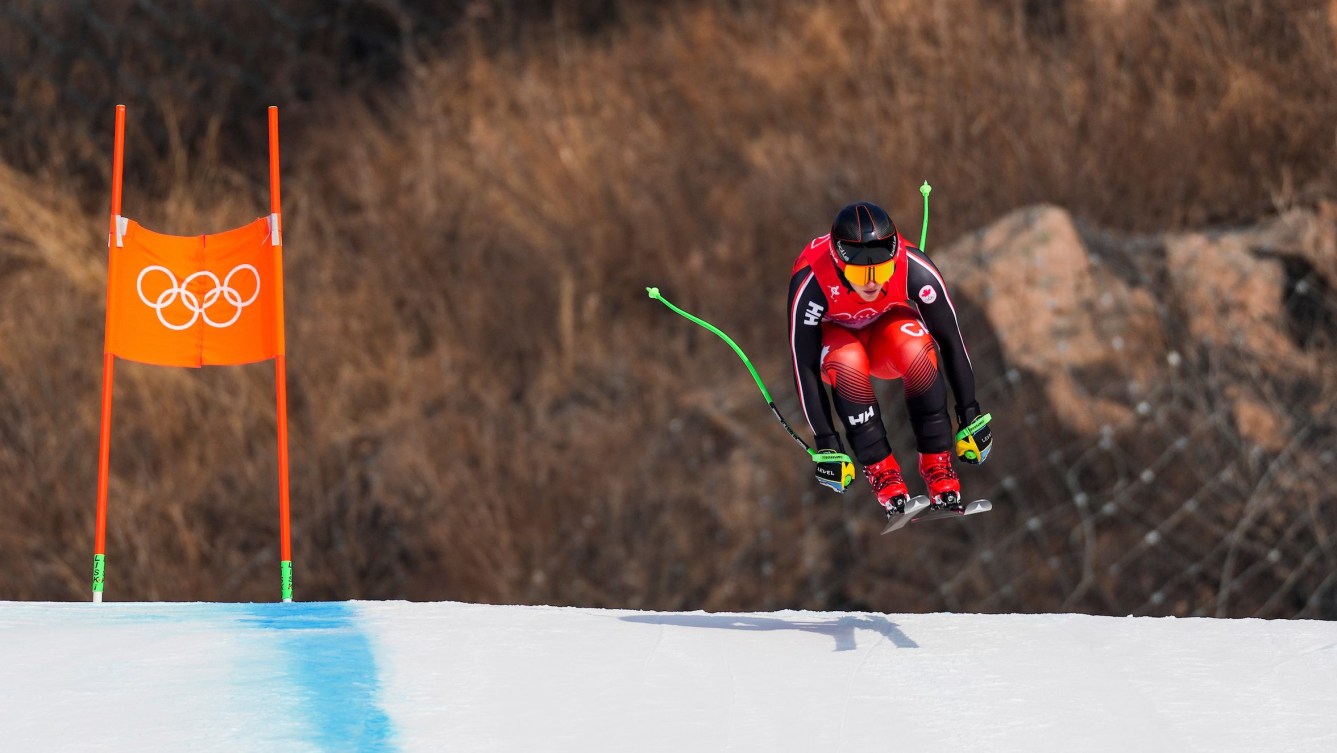Brodie Seger rises to meet challenges on the slopes and in ALS advocacy
Brodie Seger knows the true secret to success, in skiing and in life, is to never stop learning, and to embrace, rather than resist, the challenges that you face.
Sitting down with the 29-year-old Beijing 2022 Olympian at Canada Olympic Lab, in partnership with lululemon, I asked him to tell me about his 2024-25 season. What were the highlights? What were the challenges?
When it came to challenges, his immediate response was a good-natured, “Well, I’ve got a few of those!”
Two years ago saw Seger experience his first serious lower body injury. He was returning from that knee injury during the 2023-24 season, so 2024-25 was his chance to work his way back up the rankings.
“I was looking to show up and make a mark again. I had some work to do, two years out from the Olympics,” said Seger.

“The season started off great. I had a few results where I was starting from bib 49, bib 50, back of the pack, and was punching into 10th, 11th place. That’s a big feat from those later start numbers,” he added.
Seger took 10th in the downhill at the World Cup stop in Beaver Creek, Colorado in early December, as well as 11th in downhill in Val Gardena, Italy later that month. In between those results, he took the win at a Nor-Am Cup event in his home province of B.C.
“Things were just flowing and clicking. I was very conscious of not getting too high or too low, and I was regulating myself well,” said Seger.
On Boxing Day, the Canadian team was in Bormio, Italy for a downhill training day on the Stelvio track—the venue for the upcoming Milano Cortina 2026 Games.
It was tricky conditions on a track that is known to be challenging at the best of times. During his first training run, Seger crashed, hitting the net face-first at 97 kilometres per hour, resulting in a broken nose and some stitches.
While spending the afternoon getting checked out, Seger’s focus was on: Am I going to be able to do this race?
But then a call from his mom suddenly made a broken nose a minor problem.
Seger’s father, Mark, has been battling ALS for 13 years. The disease usually carries a 2-5 year life expectancy. Seger’s mother was calling to let Brodie and his brother, Riley, also a member of the national alpine ski team, know that their dad was in the hospital.
The Seger brothers rushed home from Italy. It was touch and go for a bit, but thankfully Mark dramatically improved. The Segers returned to Europe to meet back up with the team and continue racing, a decision that was not made lightly, or without an emotional toll on both athletes.
“It was a weird thing to pull myself out of. I just went through this whirlwind at home, and now I’m back in the racing environment,” said Seger. “The situation was all good at home, but I really struggled to find that flow again for the rest of the season, and find enjoyment in it. I think it drained my mental battery a bit.
“It was this real struggle of feeling like I was trying to grasp at what was working before. I wanted to show I can still do that, and instead of being present in the moment and trying to enjoy it, I was sort of trying to force it.”
Regardless, Seger qualified for the World Cup Finals in downhill for the first time in his career.
“On one hand it was a win and a goal accomplished, but it also felt like I limped across the line,” Seger said.
Unfortunately, the last downhill of the season was ultimately cancelled due to high winds and weather. A slightly anticlimactic way to end an already up and down season.
But throughout a season of highs and lows on and off the slopes, Seger was grateful to always have at least some of his family with him. Fellow alpine racer Riley is two years younger than Brodie.
“When we were younger, we were always two years apart in skiing, so we were always moving up age groups at different times and never really got to spend as much time together. Since we’ve been teammates we’ve definitely become closer,” Seger said.
“We have a pretty tight bond between all the guys on the team. But for sure, there’s even a little step above when you’re getting a course report from a teammate when it’s also your brother. You totally trust what they’re saying. You know that this person is trying to give you the best information because they care about you doing well.”
Riley was also an inspiration to Brodie to get more involved in ALS awareness and fundraising. In 2019, Riley ran the Vancouver half marathon while raising money for ALS research.
“I just thought to myself, we’ve been dealing with this disease in our family for so long, and he did something about it. Why haven’t I used my platform as a national team athlete?” said Seger.
Thus, Helmet4Hope was born. Each year, Seger hosts a contest where artists can submit a helmet design that showcases ALS awareness symbolism. Seger wears the winning design throughout the World Cup season.
Since 2021, Seger has competed in a helmet that features the colour purple and the hashtag #endALS. The blue cornflower, another symbol associated with ALS awareness, has also frequently appeared in designs.
Seger’s fundraising initiative is in support of Project Hope, a B.C. based non-profit, which has taken big steps in recent years towards developing a world-class ALS research facility at the University of British Columbia.
“It’s been very cool to see the outpouring of support,” Seger said.
One of the main topics of discussion for athletes at Lab was their own definitions of bravery, and of success. Seger’s learnings and reflections on his ski season might also be an apt parallel for other parts of his life.
“I’m in a sport where it takes a certain level of courage and bravery when you get in that start gate. But I know what kills me the most inside is when I have a run where I really, really want it and I just hang on a little too hard, and I overdo it, I force it a little bit too much. You get to the bottom and you feel like you didn’t really let go and let yourself perform, said Seger. “And I believe it takes bravery to set aside the ‘squeezing too hard to make it happen’ mentality, and instead say ‘I’m going to let go, lean into the challenge, take some risks, and I get to see what happens.”




